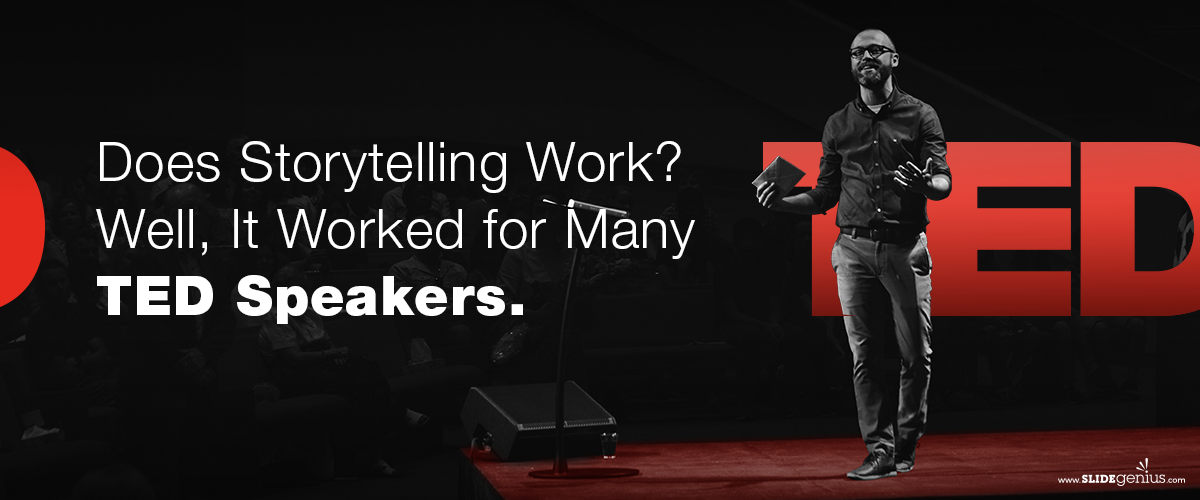
Storytelling is the best way to engage your audience during a presentation.Apart from a custom PowerPoint, it’s important that you establish a connection and elicit powerful emotions. This allows your audience to relate to and understand the need for your products and services because you’ve gone through the same thing at some point in your life.TED speakers are some of the best people to ask when it comes to the most effective public speaking tips. They tell stories, which is the core of their mission during each presentation. Telling stories, after all, is one of the most effective forms of communication.Human rights attorney and public speaker Bryan Stevenson has received the longest standing ovation ever given at a TED Talk. Carmine Gallo from Harvard Business Review shares that when he asked Steven about his speaking style, he says that he imagines talking to a friend over dinner, talking at an average of 190 words per minute, as compared to a motivational speaker who may go at 220 words per minute.That said, he must have had something up his sleeve if he’s capable of coaxing his audience to a lasting standing ovation.In March 2012, Stevenson held a TED Talk called We Need to Talk About an Injustice. Here, he talks about his grandmother and other people in his life, allowing him and the audience to establish a personal connection. What made it successful was its emotional arc—a compelling story of overcoming a relatable struggle.If you don’t have a personal experience to share with your audience, tell them stories about real people—previous customers that have benefited from your company. Relevant real-life case studies are irresistible because the audience knows these are from other customers and not just opinions based on your thoughts alone.Does your brand have an interesting origin story? You never know, this could be engaging and entertaining, like Airbnb’s—three guys making a few bucks by letting attendees at a local conference sleep at their place. Not only did this pay for the steep rent, but it also sparked a $30 billion-dollar idea.TED Talks have stood out as an effective medium because it provides extensive information that’s easy to understand. But what else makes TED Talks special? Carmine Gallo boils its core elements down to three. He notes that the success of these presentations can be attributed to these three qualities:
- Emotional
- Novel
- Memorable
Apart from these, top quality visuals are also necessary in engaging the audience. Consider consulting with PowerPoint presentation experts, it will prove a valuable step in the long term, especially for sales pitches.–Can you imagine having the power of TED speakers during presentations? To engage people until the end, making memorable pitches every time?Storytelling is an art—an effective presentation technique. With passion, novel ideas, and memorable delivery, you’ll be able to pitch like a TED speaker. Keep these in mind and rehearse, rehearse, rehearse!